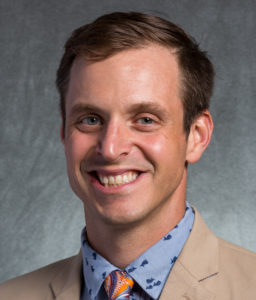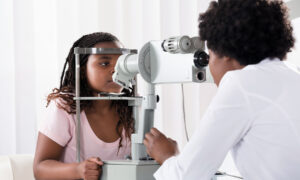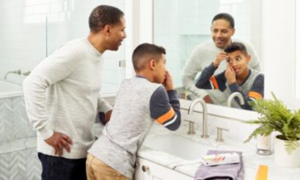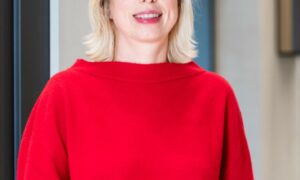April 20, 2020
By Robert Burke

James Deom, OD, MPH, FAAO
When COVID-19 forced the closing in March of the Pennsylvania practice where he works, James Deom, OD, MPH, FAAO, described the feeling as “shock and awe.” One day it was a busy two-location practice, and the next day, empty.
“We basically closed,” he says, but didn’t stay that way for long. “After a couple of days, we decided we were going to keep our entire staff and get the ODs back into the office.” Their re-opening plan includes longer hours, strict safety protocols to protect patients and staff, and adding telehealth service.
The practice has two locations, Hazleton Eye Specialists and Stroudsburg Eye Specialists, in northeastern Pennsylvania, and employs 40 people.
The most significant change is how patients are allowed into the practice. The focus is on urgent and emergent care, and all patients are screened by staff. “We’re definitely interviewing patients rigorously before we agree to see them. We ask, ‘Have you been sick, do you have a cough, have you traveled recently, or spent time with someone who has?’ And we are reviewing their pre-existing conditions,” he says. Deciding which patient to see “is really done case by case.”
Another major change is patients are allowed in just one at a time for about 30 minutes each. The next patient in line has to wait outside in their vehicle until the staff calls them. Gloves and masks and cleaning protocols are in place before, during, and after each visit. The two locations have 14 lanes each, so there is a lot of space, and that extra room is an advantage now because it lets everybody spread out, says Dr. Deom.
Besides spreading out in the practice space, patient care happens over a longer workday. The practice is adding an extra hour in the morning and an hour or two in the evenings. “And we’ve been open every Saturday, and I would say we will be for the foreseeable future,” he says.
For its telehealth service, the practice has started using Doxy.me, which Dr. Deom calls “the quickest, easiest and most user-friendly.” The service has a free version, but the practice paid for a version that offers text capability between patients and doctors and video support.
The ODs can use it to do some tasks, such as testing visual acuity and eye movement. “It’s not the best, but I think it’s sufficient at this point,” says Dr. Deom, who is not yet a believer in telehealth. Even though the available applications are growing and changing quickly during this COVID-19 environment, “it is really showing its limitations” in terms of diagnosing patients’ eye health. “The in-person exam is really superior,” he says.
That is especially true for treating myopia, he says. The practice is still seeing myopic patients, and telehealth consults are part of that care. Dr. Deom has already worked with orthokeratology patients via Doxy.me, but with the new constraints and reduced patient flow, there are fewer myopia patients. “Obviously it’s fewer people,” he says. But, “if somebody is in the middle of an ortho-k fit, you have to try to keep that process moving.”
Dr. Deom also delivers a steady flow of social media content through videos on the practice’s Facebook page to keep patients informed on what changes the practice has made.
Even as the practice has its doors partly open, its way forward is uncertain. The practice received a Paycheck Protection Program loan through the federal Small Business Administration on April 13, and keeping the staff working lets it use that money and have the loan forgiven.
Dr. Deom says the PPP loan “is just a Band-Aid. It will help support the practice and our employees over the net two months , but it won’t heal the wound.” Next for the practice is figuring out how to keep treating its patients and how to handle the transition when COVID-19 recedes.
The act of re-opening draws criticism from some corners, he says. “It’s kind of unpopular to do this. People are getting flamed all over social media for opening back up, but we have to all get on the same page of doing a safer re-entry.”













